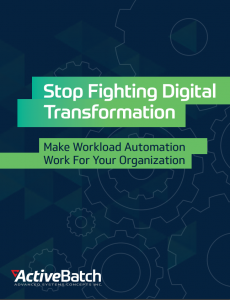IT infrastructure and operations (I&O) teams are under intense pressure to rapidly adapt to changing business models, leveraging new technologies, processes and workflows to optimize their digital transformation. In this article, we’ll provide an insightful overview of how I&O teams are managing this transformative journey, considering the latest advancements in API integration, cloud infrastructures and their impact on business outcomes for end-users.
Understanding IT Infrastructure Management
IT infrastructure teams play a crucial role in managing the physical hardware supporting systems, networks and storage necessary for IT service delivery. Traditionally housed in on-premises data centers, the landscape is evolving with a shift towards third-party colocation facilities or virtual IT environments via cloud providers. This transition necessitates a focus on integrating IT assets across cloud-based and on-premises environments, emphasizing security and data integrity through API advancements.
The Scope of IT Operations Management
IT operations teams are responsible for applications, processes and platforms supporting IT and business functions. This encompasses software configuration, maintenance, database management, disaster recovery and the integration of new technologies. IT operations also extends to managing help desks and devices, ensuring comprehensive support for business needs.
IT Operations Management in the ITIL Framework
An integral part of IT Operations Management (ITOM) is the Information Technology Infrastructure Library (ITIL), providing best practices for delivering IT services. With the recent release of ITIL 4 (2019), trends include integrating IT with the larger organization, fostering collaboration within IT and with other departments and implementing agile and DevOps methodologies.
Don’t let IT complexity hamper your digital goals
Get the latest trends and data on what’s driving transformation and how IT teams address these challenges.
Evolving I&O Teams for the Digital Future
The rapid evolution of technology impacts markets, consumer expectations and businesses, making it imperative for I&O teams to optimize digital experiences and application workloads. IT has become a central player in the organization’s value stream, contributing to product development, improvement and the maintenance of systems supporting the business’s value proposition.
To meet the demands of this evolving landscape, I&O teams must transition from traditional hierarchical approaches to collaborative efforts. The focus is on rapid design, deployment and improvement, moving beyond project management to deliver products continuously refined for end-users.
Unifying Infrastructure and Operations
The need for rapid development has led to the convergence of infrastructure and operations. Whether integrated within IT Operations Management or referred to as infrastructure and operations (I&O), this shift is crucial. As data becomes the lifeblood of organizations, infrastructure plays a critical role in day-to-day operations.
New technologies such as infrastructure-as-code and low-code process automation platforms facilitate rapid and reliable provisioning of servers, resources and devices. This accelerates data delivery, supports real-time decision-making and reduces the need for capacity planning.
The Future of IT Infrastructure and Operations
As technology continues to evolve, the relationship between IT teams and the business undergoes significant changes. Leveraging Infrastructure as a Service (IaaS) solutions and cloud-based data centers allows IT to optimize operations and develop new solutions and services.
Looking ahead, IT staff must rapidly adapt to new technologies. Extensible, low-code IT automation tools will be indispensable for integrating new technologies with existing environments. Platforms like low-code workload automation enable the rapid assembly of end-to-end processes, regardless of underlying technologies or their locations (on-premises, private cloud or public cloud).
In conclusion, the future of IT infrastructure and operations lies in optimizing processes, embracing digital transformation trends and delivering enhanced business outcomes for end-users. Stay ahead by incorporating these advancements in API, cloud infrastructures and optimization strategies into your IT landscape.
Ready to see how we make workload automation easy?
Schedule a demo to see how easy it is to build and maintain your jobs in ActiveBatch.

